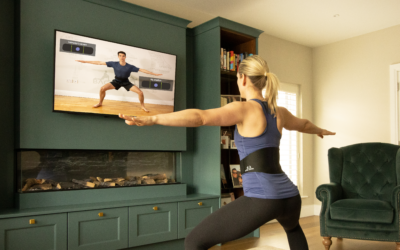Understanding your back and the importance of the neutral spine to prevent injury.
When talking to many patients over the years, one of the main complaints they have is about the fact that their back pain has not been explained to them fully. You might get to spend 5 to 10 minutes with your G.P who gives you painkillers or anti-inflammatories and sends you on your way without explaining what is occurring with the back. I am going to write a series of articles that will first explain the back and how a healthy back should function and then discuss the type of injuries that can occur to the back and what causes them.
A key component of any back treatment plan is to educate you about your spine so you can learn to take control of your back pain. Hopefully after this article you will have a good idea about your back, possible injuries (which we will delve into more in the future) and causes of back injury. As Charlie Monger says ” Tell me where I will die so I never go there!”. Understanding the causes and structure of the back will help you avoid the pain triggers that can cause your pain.
There are two important concepts with the spine that are important to understand. First is the neutral spine. Second is the three systems that help keep the spine in this neutral position.
The Neutral Spine

The healthy spine has three very slight curves, it is not completely flat. The neck and lower back should have a slight inward curve known as a lordosis and the upper back should have a slight outward curve known as a kyphosis. This allows the back to absorb force safely and effectively.
When we move out of the these curves to more extreme flexion and extension (rounding and arching) we tend to put the ligaments, discs and joints under a lot of pressure.


Look at this picture above. When the back when the back is flexed or extended outside this normal range it puts excessive pressure on the discs, ligaments and tendons. These will become painful and damaged and can then push on the spinal chord. The goal of the neutral spine is to protect the spinal cord during movement. Keeping the back in a good alignment allows for much less pressure to be placed on the spine.
Like anything if you bring something to the end of its range it is much more vulnerable to damage. Keeping the back in the middle allows the back to be in the position of most safety. This is the neutral spine.
3 Systems to help keep the Spine Stable.
The three systems that keep the spine stable is the passive system ( The ligaments, discs and joints), the active system (muscles) and control system (Nervous system). These three should work in tandem together to take pressure off the spine.
The passive system being the joints, discs and ligaments of the back will always give support. It is called passive as you do not need to do anything for these structures to give support. So when we move too much by bending or extending it is these structures that can take the stress this can cause to the back in order to keep the spinal chord safe.
If the active and control systems are working optimally then this is perfect. However, a lot of times our muscular system is weak. Our control system does not give us warnings when we are in poor positions that put excessive pressure on the spine. This can lead to injury of these structures. For example repeated flexion and twisting can weaken the outside of the disc forcing the gel out of the back and to press against the spinal cord. This is a disc bulge that we can hear so much about causing pins and needles into the bum or legs or back spasms.

Facet joint injuries can also occur with too much bending or twisting, especially when the disc is worn causing irritation, pain and eventually arthritis.
The Active or Muscular System
These are the core and glute muscles of the body. These muscles should help to keep the spine in neutral and prevent unwanted movement in the spine. This can help in two ways. First the muscles can work to keep the spine in a neutral position when we are lifting or moving which puts less pressure on the discs, ligaments and joints. Second even when there is movement at the back the core muscles take a lot of the stress and thus help less stress and strain be placed on the passive structures, thus preventing wear.
The control system
The last key system is the nervous system. This should make sure we are getting the correct information. So many people are not aware of their back positions. You probably straightened up when you read that but we should be naturally able to keep good posture and lifting technique. We shouldn’t have to think about it. It is about training our nervous system to know when we are and are not in dangerous positions. A lot of people hurt themselves exercising because they are doing exercises incorrectly and are not aware they are doing the exercises incorrectly. By learning how to keep your back in the neutral position it allows you to improve your back health immensely. Our BackAware Belt is designed to help give people this awareness.
In addition to improving body and back awareness, the nerves themselves can cause pain. Nerves like the Sciatic nerve can become compressed and irritated causing shooting pain into the bum and down the leg. Disc bulges or facet joint issues can also press on the nerves coming from the spinal cord causing issues. Taking pressure off these nerves allows them time to heal and stops them sending excessive nervy pain down the leg. For more information on sciatica visit www.backawarebelt.com/sciatica.
Hopefully this article has given you some new information about the spine and how it should work. Keeping our neutral positions and pushing back through our hips and not moving through the back gives us the best chance to sparing our spine and helping the back. Training the core muscles and the nervous system to have better movement patterns will help remove pain triggers and set us up for less back pain going forward.
To see what is going on with your back take our free quiz here Back Quiz.










